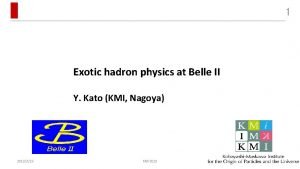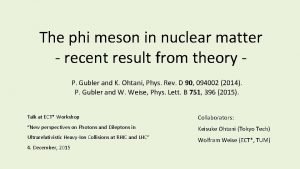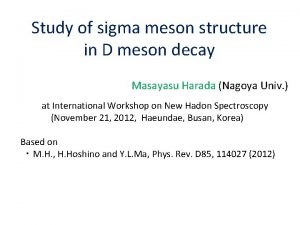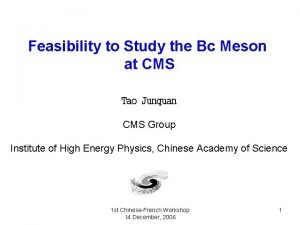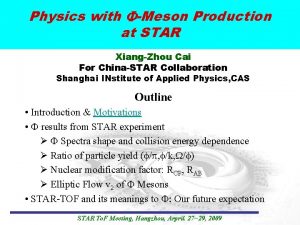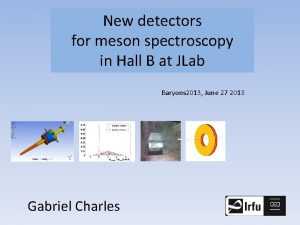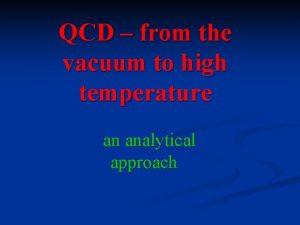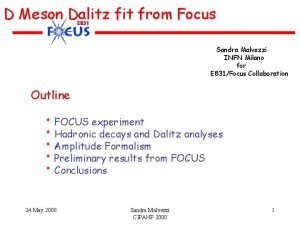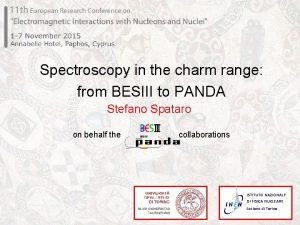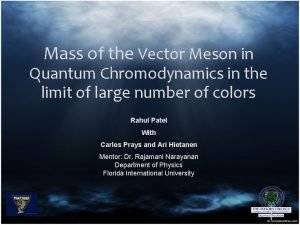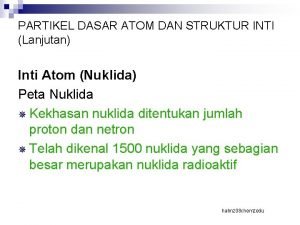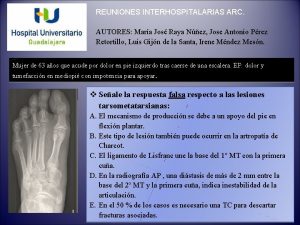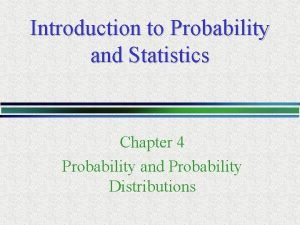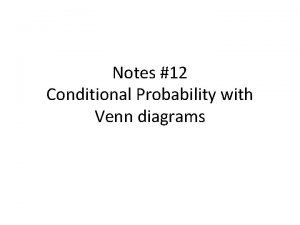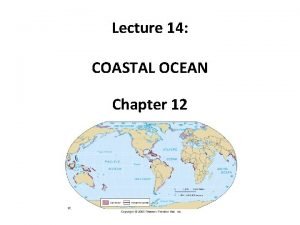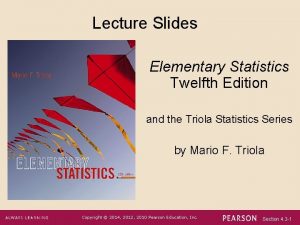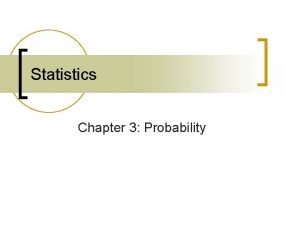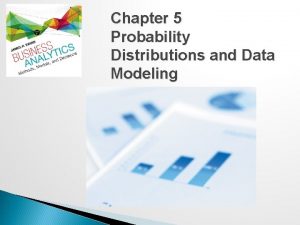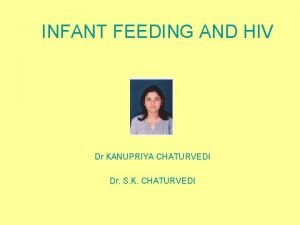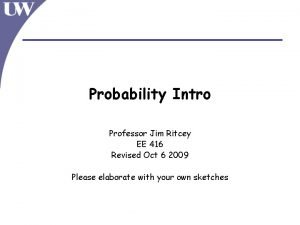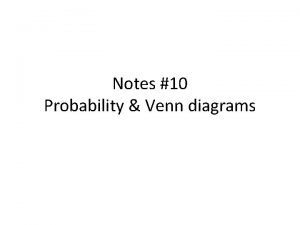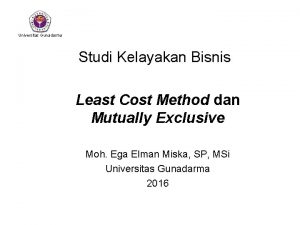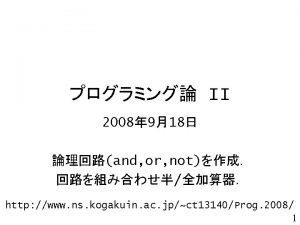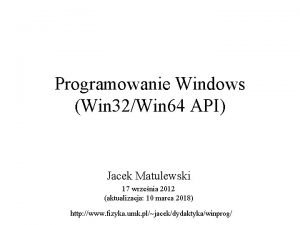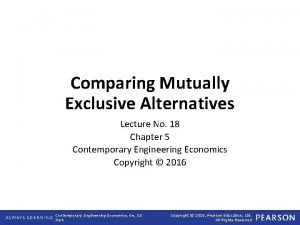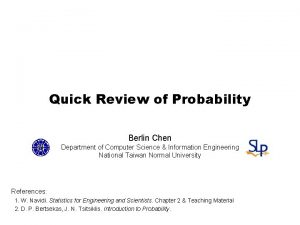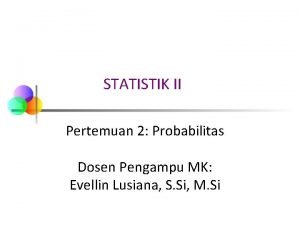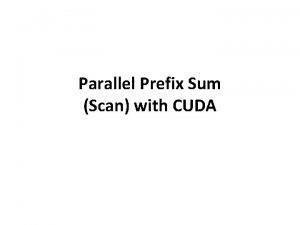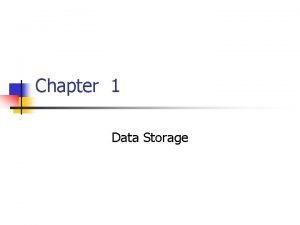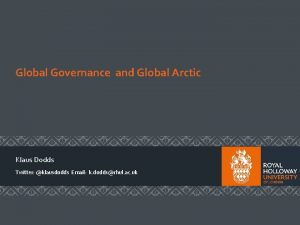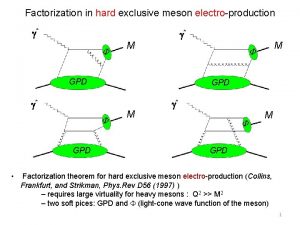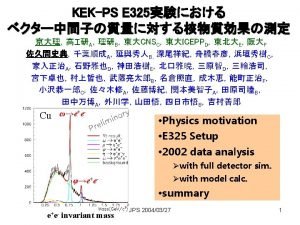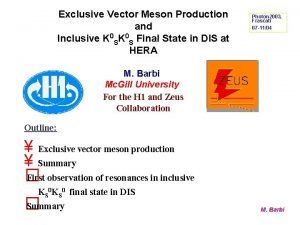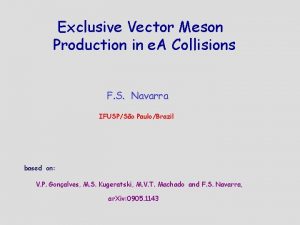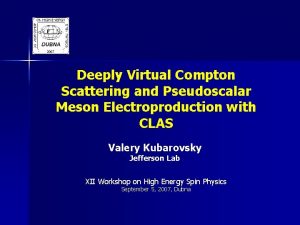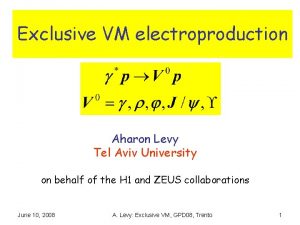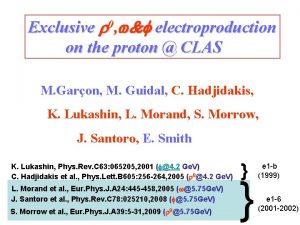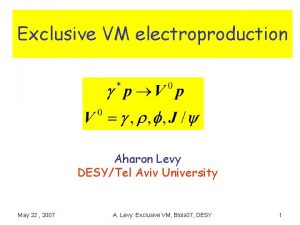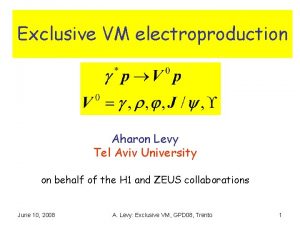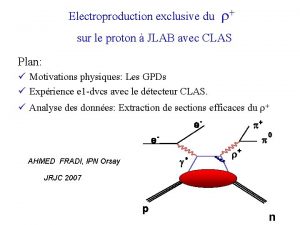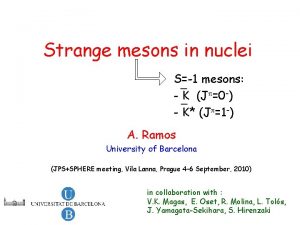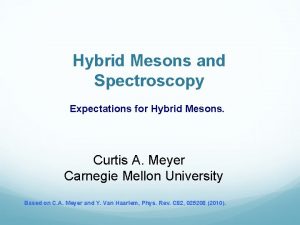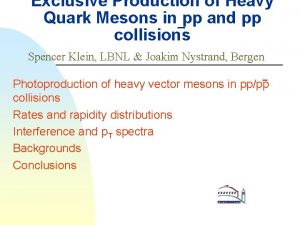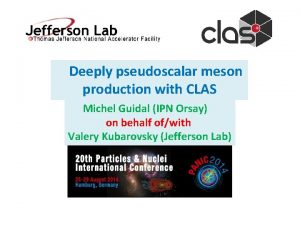Deep exclusive meson electroproduction focus on vector mesons































![ep->epf ( K+[K-]) GK s. L f. L ep->epf ( K+[K-]) GK s. L f. L](https://slidetodoc.com/presentation_image_h2/5ca375c163a3b71795f41e3a7a152c5c/image-32.jpg)





![VMs (r 0, w, f) the only exclusive process [with DVCS] measured over a VMs (r 0, w, f) the only exclusive process [with DVCS] measured over a](https://slidetodoc.com/presentation_image_h2/5ca375c163a3b71795f41e3a7a152c5c/image-38.jpg)









![Channel selection e p e’ [n] r+ e’ [n] p+p 0 e’ [n] p+ Channel selection e p e’ [n] r+ e’ [n] p+p 0 e’ [n] p+](https://slidetodoc.com/presentation_image_h2/5ca375c163a3b71795f41e3a7a152c5c/image-48.jpg)





![ep->epf ( K+[K-]) ep->epf ( K+[K-])](https://slidetodoc.com/presentation_image_h2/5ca375c163a3b71795f41e3a7a152c5c/image-54.jpg)


![ep->epw ( p+p-[p 0]) ep->epw ( p+p-[p 0])](https://slidetodoc.com/presentation_image_h2/5ca375c163a3b71795f41e3a7a152c5c/image-57.jpg)






















![Longitudinal cross sections I Y R NA IM L E R P s. L(r+)[mb] Longitudinal cross sections I Y R NA IM L E R P s. L(r+)[mb]](https://slidetodoc.com/presentation_image_h2/5ca375c163a3b71795f41e3a7a152c5c/image-80.jpg)





- Slides: 85

Deep exclusive meson electroproduction: focus on vector mesons Discussions with/material borrowed from: L. Favart, S. Kananov, P. Marage, C. Riedl, K. Park, …



Regge theory: Exchange of families of mesons in the t-channel


Regge theory: Exchange of families of mesons in the t-channel M(s, t) ~ sa(t) where a(t) (trajectory) is the relation between the spin and the (squared) mass of a family of particles M->sa(t) stot~1/s x Im(M(s, t=0))->sa(0)-1 [optical theorem] ds/dt~1/s 2 x |M(s, t)|2 ->s 2 a(t)-2 stot ->[ea(t)lns(s)] ds/dt s t





Some signatures of the (asymptotic) « hard » processes: Q 2 dependence: W dependence: Ratio of yields: s. L~1/Q 6 s~|x. G(x)|2 s. T~1/Q 8 (for gluon handbag) r/w/f/(J/Y)~9/1/2/8 Saturation with hard scale of a. P(0), b, … SCHC : checks with SDMEs s. L/s. T~Q 2 (for gluon handbag)

H 1, ZEUS , Q 2>>

HERMES H 1, ZEUS COMPASS CLAS H 1, ZEUS , Q 2>>

HERMES H 1, ZEUS COMPASS CLAS H 1, ZEUS , Q 2>> + « older » data from: E 665, NMC, Cornell, …

HERMES H 1, ZEUS COMPASS CLAS H 1, ZEUS , Q 2>> + « older » data from: E 665, NMC, Cornell, …

W dependence Steepening W slope as a function of Q 2 indicates « hard » regime (reflects gluon distribution in the proton)

W dependence Steepening W slope as a function of Q 2 indicates « hard » regime (reflects gluon distribution in the proton) Two ways to set a « hard » scale: *large Q 2 *mass of produced VM Universality : r, f at large Q 2+M 2 similar to J/y

a. P(0) increases from “soft” (~1. 1) to “hard” (~1. 3) as a function of scale m 2=(Q 2+MV 2)/4. Hardening of W distributions with m 2

Q 2 dependence s. L~1/Q 6 => Fit with s~1/(Q 2+MV 2)n r: Q 2 >0 Ge. V 2 => n=2+/- 0. 01 J/y: 2 2 Q >10 Ge. V => n=2. 5+/- 0. 02 (S. Kananov) Q 2 >0 Ge. V 2 => n=2. 486 +/- 0. 08 +/-0. 068 Q 2 dependence is damped at low Q 2 and steepens at large Q 2 Approaching handbag prediction of n=6 (Q 2 not asymptotic, fixed W vs fixed x. B, stot vs s. L, Q 2 evolution of G(x)…)

t dependence b decreases from “soft” (~10 Ge. V-2) to “hard” (~4 -5 Ge. V-2) as a function of scale m 2=(Q 2+MV 2)/4

Ratios r/w/f/(J/Y) ~ 9/1/2/8

s. L / s. T (almost) compatible with handbag prediction (damping at large Q 2)

SDMEs HERMES H 1 (almost) no SCHC violation

At high energy (W>5 Ge. V), the general features of the kinematics dependences and of the SDMEs are relatively/qualitatively well understood Good indications that the “hard”/p. QCD regime is dominant for m 2=(Q 2+MV 2)/4 ~ 3 -5 Ge. V 2. Data are relatively well described by GPD/handbag approaches

HERMES H 1, ZEUS COMPASS CLAS H 1, ZEUS , Q 2>>

JLab & CLAS in Hall B Duty cycle 100% Emax 6 Ge. V Pmax 80%

Exclusive r 0, w, f & r+ electroproduction on the proton @ CLAS 6 K. Lukashin et al. , Phys. Rev. C 63: 065205, 2001 (f@4. 2 Ge. V) C. Hadjidakis et al. , Phys. Lett. B 605: 256 -264, 2005 (r 0@4. 2 Ge. V) L. Morand et al. , Eur. Phys. J. A 24: 445 -458, 2005 (w@5. 75 Ge. V) J. Santoro et al. , Phys. Rev. C 78: 025210, 2008 (f@5. 75 Ge. V) S. Morrow et al. , Eur. Phys. J. A 39: 5 -31, 2009 (r 0@5. 75 Ge. V) A. Fradi, Orsay Univ. Ph. D thesis (r+@5. 75 Ge. V) } } } e 1 -b (1999) e 1 -6 (2001 -2002) e 1 -dvcs (2005)

e 1 -6 experiment (Ee =5. 75 Ge. V) (October 2001 – January 2002)

ep ep p+(p-) Mm(epp+ X) p+ e Mm(ep. X) (p-) p

sr (g*p pr 0) vs W

r+ r 0 w f C. Hadjidakis et al. , Phys. Lett. B 605: 256 -264, 2005 (r 0@4. 2 Ge. V) S. Morrow et al. , Eur. Phys. J. A 39: 5 -31, 2009 (r 0@5. 75 Ge. V) L. Morand et al. , Eur. Phys. J. A 24: 445 -458, 2005 (w@5. 75 Ge. V) J. Santoro et al. , Phys. Rev. C 78: 025210, 2008 (f@5. 75 Ge. V) K. Lukashin, Phys. Rev. C 63: 065205, 2001 (f@4. 2 Ge. V) A. Fradi, Orsay Univ. Ph. D thesis, 2009 (r+@5. 75 Ge. V)
![epepf KK GK s L f L ep->epf ( K+[K-]) GK s. L f. L](https://slidetodoc.com/presentation_image_h2/5ca375c163a3b71795f41e3a7a152c5c/image-32.jpg)
ep->epf ( K+[K-]) GK s. L f. L

+ VGG GPD model

VGG GPD model GK GPD model

t γ, π, ρ, ω… -2ξ x+ξ x-ξ ~ ~ H, H, E, E (x, ξ, t) “ERBL” region -1 Antiquark distribution -ξ 0 “DGLAP” region ξ q q Distribution amplitude ERBL +1 Quark distribution DGLAP W~1/x x

DDs + “meson exchange” DDs w/o “meson exchange” (VGG) “meson exchange”

Comparison with r 0, w, f
![VMs r 0 w f the only exclusive process with DVCS measured over a VMs (r 0, w, f) the only exclusive process [with DVCS] measured over a](https://slidetodoc.com/presentation_image_h2/5ca375c163a3b71795f41e3a7a152c5c/image-38.jpg)
VMs (r 0, w, f) the only exclusive process [with DVCS] measured over a W range of 2 orders of magnitude (s. L, T, ds/dt, SDMEs, …) At high energy (W>5 Ge. V), transition from “soft” to “hard” (m 2 scale) physics relatively well understood (further work needed for precision understanding/extractions) At low energy (W<5 Ge. V), large failure of “hard” approach. This is not understood. Is the GPD/handbag approach setting at much larger Q 2 or is the widely used GPD parametrisation in the valence region completely wrong ? A lot of new data expected soon from JLab@11 Ge. V, COMPASS (transv. target), HERA new analysis, …

GPDs/handbag ? ? ? GPDs/handbag W~1/x


g. N->Np

sr (g*p pr 0) vs W

Angular distribution analysis, cos qcm Relying on SCHC (exp. check to the ~25% level)

Longitudinal cross section s. L (g*Lp pr. L 0)

Interpretation “a la Regge” : Laget model g*p pr 0 g*p pw g*p pf Free parameters: *Hadronic coupling constants: g. MNN *Mass scales of EM FFs: (1+Q 2/L 2)-2

s. L (g*Lp pr. L 0) s, f 2 Pomeron Regge/Laget

Exclusive r + electroproduction
![Channel selection e p e n r e n pp 0 e n p Channel selection e p e’ [n] r+ e’ [n] p+p 0 e’ [n] p+](https://slidetodoc.com/presentation_image_h2/5ca375c163a3b71795f41e3a7a152c5c/image-48.jpg)
Channel selection e p e’ [n] r+ e’ [n] p+p 0 e’ [n] p+ g g p+ EC e gg (p-) (p) One event in CLAS IC

Invariant mass IM(p+p 0) Total cross section s (Q 2, x. B) r+ Y R A IM L E R P IN

Regge “hadronic” approach r+ r+ + p+ r+ n n GPD “partonic” approach H, E r+ L ρ0 eu Hu - ed Hd eu. Eu - ed. Ed w eu Hu + e d Hd eu. Eu + e d. Ed ρ+ Hu - Hd Eu - Ed

“Hadronic approach”: Laget model r+ r 0

“Partonic approach”: GPDs (*) r+ r 0 VGG GPD model GK GPD model

Exclusive f electroproduction
![epepf KK ep->epf ( K+[K-])](https://slidetodoc.com/presentation_image_h2/5ca375c163a3b71795f41e3a7a152c5c/image-54.jpg)
ep->epf ( K+[K-])

Laget s. T+es. L W=2. 9 Ge. V W=2. 45 Ge. V W=2. 1 Ge. V GK s. L f. L

Exclusive w electroproduction
![epepw ppp 0 ep->epw ( p+p-[p 0])](https://slidetodoc.com/presentation_image_h2/5ca375c163a3b71795f41e3a7a152c5c/image-57.jpg)
ep->epw ( p+p-[p 0])

cos(qcm) distribution fcm distribution

Cross section s(g*p pw) Laget Regge model for g*p pw Laget s. T+es. L Laget es. L VGG es. L (H&E) Issue with GPD approach if p 0 exchange dominant : ~ p 0 ->E while ~ E subleading in handbag for VM production

Cross section s(g*p pw) –Comparison with GPD calculation (VGG)-

r+ r 0 w f C. Hadjidakis et al. , Phys. Lett. B 605: 256 -264, 2005 (r 0@4. 2 Ge. V) S. Morrow et al. , Eur. Phys. J. A 39: 5 -31, 2009 (r 0@5. 75 Ge. V) L. Morand et al. , Eur. Phys. J. A 24: 445 -458, 2005 (w@5. 75 Ge. V) J. Santoro et al. , Phys. Rev. C 78: 025210, 2008 (f@5. 75 Ge. V) K. Lukashin, Phys. Rev. C 63: 065205, 2001 (f@4. 2 Ge. V) A. Fradi, Orsay Univ. Ph. D thesis, 2009 (r+@5. 75 Ge. V)

GPDs/handbag ? ? ? GPDs/handbag W~1/x

Motivation to go to higher Q 2 (but stay in valence region): Approach asymptotic regime and test validity of power corrections If (power corrected) handbag diagram in valence region: same Q 2 dependence at low W than at large W: r 0 and f should be different from w and r+, these latter having higher-twist t-channel exchanges If higher twist contribution in valence region: cross section will drop faster as a function of Q 2 at low W than at large W:

Overview of existing data (valence region) r 0, w, f & r+ electroproduction on the proton @ CLAS 6 GPDs or not GPDs ? Perspectives with CLAS 12 & EIC

100% acceptance & integrated over all variables but (x. B, Q 2) 6 Ge. V e fixed p target Counting ra for 1000 hou at 1034 cm-2 s Limitation co from phase s

100% acceptance & integrated over all variables but (x. B, Q 2) 6 Ge. V e fixed p target Counting ra for 100 hour at 1034 cm-2 s Limitation co from phase s

100% acceptance & integrated over all variables but (x. B, Q 2) 11 Ge. V e fixed p target Counting ra for 1000 hou at 1035 cm-2 s Limitation co from phase s

100% acceptance & integrated over all variables but (x. B, Q 2) 11 Ge. V e fixed p target Counting ra for 1000 hou at 1035 cm-2 s Limitation co from phase s

100% acceptance & integrated over all variables but (x. B, Q 2) 11 Ge. V e 60 Ge. V p Counting ra for 1000 hou at 1034 cm-2 s Limitation co from luminos

100% acceptance & integrated over all variables but (x. B, Q 2) 11 Ge. V e 60 Ge. V p Counting ra for 1000 hou at 1034 cm-2 s Limitation co from luminos


6 Ge. V e fixed p target 11 Ge. V e 60 Ge. V p

CLAS@6 Ge. V S. Morrow et al. , Eur. Phys. J. A 39: 5 -31, 2009 (r 0@5. 75 Ge. V)

Back-up slides

IM(pp+)

IM(pp-)

Interpretation in terms of GPDs ? LO (w/o kperp effect) LO (with kperp effect) Soft overlap (partial) Handbag diagram calculation has kperp effects to account for preasymptotic effects

Background Subtraction (normalized spectra) 1) Ross-Stodolsky B-W for r 0(770), f 0(980) and f 2(1270) with variable skewedness parameter, 2) D++(1232) p+p- inv. mass spectrum and p+p- phase space.

ds/dt (g*p p r 0) Large tmin ! (1. 6 Ge. V 2) Fit by ebt
![Longitudinal cross sections I Y R NA IM L E R P s Lrmb Longitudinal cross sections I Y R NA IM L E R P s. L(r+)[mb]](https://slidetodoc.com/presentation_image_h2/5ca375c163a3b71795f41e3a7a152c5c/image-80.jpg)
Longitudinal cross sections I Y R NA IM L E R P s. L(r+)[mb] ds. L/dt (r+)[mb]


Comparison with r 0, w, f

Increasing Q 2: e - 2 Q ~ Me. V 2 ? Q 2>> e - 2 Q >>Ge. V 2

GPDs parametrization based on DDs (VGG/GK model) Strong power corrections… but seems to work at large W…

ds/dt (g*p p r 0) Large tmin ! (1. 6 Ge. V 2) Fit by ebt
 Mutually exclusive events vs not mutually exclusive events
Mutually exclusive events vs not mutually exclusive events Exclusive focus
Exclusive focus Porters generic competitive strategies
Porters generic competitive strategies Business level strategy differentiation
Business level strategy differentiation Actor focus vs object focus
Actor focus vs object focus Prolepsis
Prolepsis Deep focus
Deep focus Nondiagetic
Nondiagetic Shallow focus earthquake
Shallow focus earthquake Deep focus
Deep focus Citizen kane deep focus analysis
Citizen kane deep focus analysis Deep asleep deep asleep it lies
Deep asleep deep asleep it lies Deep forest towards an alternative to deep neural networks
Deep forest towards an alternative to deep neural networks 深哉深哉耶穌的愛
深哉深哉耶穌的愛 B meson decay
B meson decay Phi meson
Phi meson Sigma meson
Sigma meson Mumu+
Mumu+ K star meson
K star meson Meson
Meson Meson valves
Meson valves Sandra malvezzi
Sandra malvezzi Charm
Charm Meson
Meson Partikel meson
Partikel meson Jefferson lab
Jefferson lab Irene mendez meson
Irene mendez meson Lucas 10 30 37
Lucas 10 30 37 Cosenos directores de un vector
Cosenos directores de un vector Vector resolution
Vector resolution Unit vector
Unit vector The position vector
The position vector A and b probability
A and b probability Mutually exclusive events gcse questions
Mutually exclusive events gcse questions Beretta super exclusive
Beretta super exclusive Probability of a given b formula
Probability of a given b formula Us exclusive economic zone
Us exclusive economic zone The exclusive legal right given to an originator
The exclusive legal right given to an originator Mutually exclusive definition
Mutually exclusive definition Mutually exclusive practice
Mutually exclusive practice Mutually exclusive vs mutually inclusive
Mutually exclusive vs mutually inclusive Exclusive economic zone
Exclusive economic zone Three levels of distribution intensity
Three levels of distribution intensity Independence probability formula
Independence probability formula Qbs
Qbs Mutually exclusive events examples
Mutually exclusive events examples P(b a) formula
P(b a) formula Al baraka bank egypt
Al baraka bank egypt Nhsp bank exclusive
Nhsp bank exclusive Breastfeeding definition
Breastfeeding definition How to find mutually exclusive probability
How to find mutually exclusive probability Chrnme
Chrnme Mutually exclusive
Mutually exclusive Mutually inclusive formula
Mutually inclusive formula Cherry kokolino hyperreal
Cherry kokolino hyperreal Muttually
Muttually Crucialconversations com exclusive
Crucialconversations com exclusive Crucialconversations.com/exclusive mutual respect
Crucialconversations.com/exclusive mutual respect Mutually exclusive
Mutually exclusive Mutually exclusive
Mutually exclusive Logical operators equivalence
Logical operators equivalence Exclusive goods meaning
Exclusive goods meaning Bcbs fep vision
Bcbs fep vision Supply chain management and marketing channels
Supply chain management and marketing channels Mutually exclusive events examples in real life
Mutually exclusive events examples in real life Exhaustive events
Exhaustive events Exclusive or gate
Exclusive or gate Exclusive oskorušovica
Exclusive oskorušovica Mue table
Mue table Jc penny mens jeans
Jc penny mens jeans Barang rival adalah
Barang rival adalah Multiethnic state definition
Multiethnic state definition Acquire srwlock exclusive xp
Acquire srwlock exclusive xp How to find p(a and b)
How to find p(a and b) Mutually exclusive alternatives
Mutually exclusive alternatives Mutually exclusive events meaning
Mutually exclusive events meaning Exclusive vs selective distribution
Exclusive vs selective distribution Contoh collectively exhaustive
Contoh collectively exhaustive Cuda exclusive scan
Cuda exclusive scan Exclusive breastfeeding
Exclusive breastfeeding Exclusive or operation
Exclusive or operation Irr decision rule
Irr decision rule Klaus dodds
Klaus dodds Mutually independent vs mutually exclusive
Mutually independent vs mutually exclusive Example of overlapping events
Example of overlapping events Mutually exclusive collectively exhaustive
Mutually exclusive collectively exhaustive














